Just look at what the ‘global heat wave’ is doing to polar bear sea ice habitat!
According to the Guardian (9 July 2018), there is a “global heat wave” going on right now.
In Siberia, the heat is supposedly “completely unprecedented” and will surely (we are told) impact Arctic sea ice — the habitat of the iconic polar bear. Yet a comparison of previous years shows little to no impact on sea ice: there is more ice present than there was in 2007.
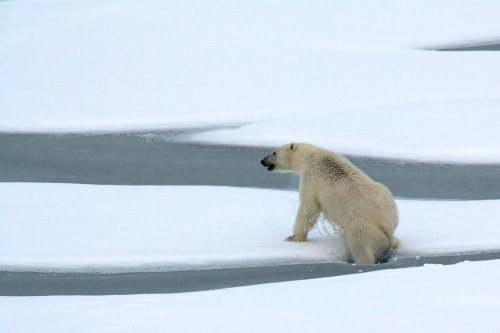
Said The Guardian:
“But though we cannot say definitively that the current heatwave is caused by carbon emissions, it fits the pattern of long-term changes that we call climate. It is part of a global phenomenon, even if not the most important part. The really significant change is happening in eastern Siberia at the moment, where a completely unprecedented heatwave is warming that Arctic coastline, with consequences that are unpredictable in detail but surely bad on a large scale.” [my bold]
The heat — which some folks admit they not only expect during this season called summer but anticipate with joy — has been around since late June, with several locales outside Siberia affected, including southern Ontario, Quebec, Los Angeles CA, Britan, many locations in the eastern USA, Europe.
With so many locations across the Northern Hemisphere experiencing very hot weather over the last few weeks (maybe record-breaking, maybe not), let’s take a look at what all that heat is doing to Arctic sea ice compared to previous years.
Look at 2007 first, for the date of July 8 (courtesy NSIDC’s new sea ice comparison tool).
Recall that 2007 had the 2nd lowest summer sea ice minimum since 1979.
It turns out that 2007 also had late June heat waves in western North America and Asia (here and here) but I guess not as hot as this year or this year’s heat waves surely would not be newsworthy.
Below is what sea ice extent looked like for 8 July 2007, with a big patch of open water off Siberia in the East Siberian Sea, the Southern Beaufort, Chukchi, and Kara Seas and virtually no ice left in Hudson Bay:
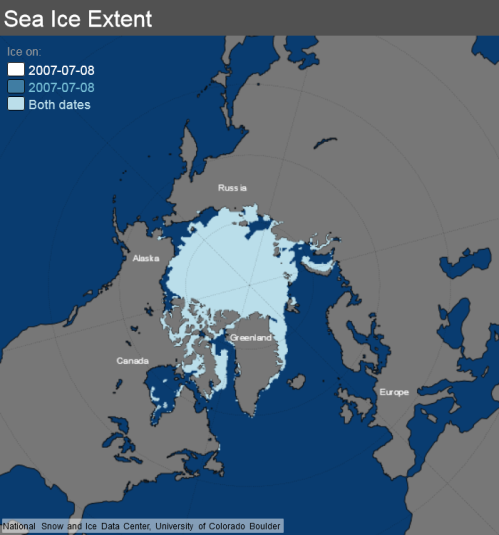
And below is what sea ice extent looked like for 8 July 2018 (Sunday), with a big patch of open water off Siberia (but not much larger than 2007), a small patch in the Southern Beaufort but lots of ice still in the Western Beaufort, the Chukchi Sea around Wrangel Island, in the eastern Laptev Sea and the western Kara Sea. Although there is less ice in the Barents Sea than in 2007, the Central Canadian Archipelago is still clogged with ice and southern-most Hudson Bay is still half-filled with ice:
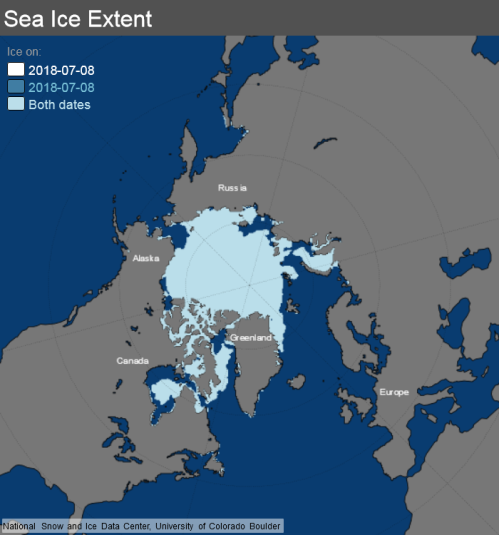
Bottom line: NSIDC shows slightly more ice this year than in 2007 at 8 July (here), despite weeks of record-breaking, late June/early July ‘global’ heat waves in 2018.
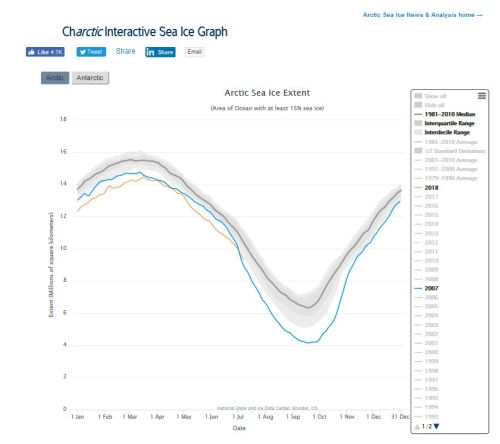
Note that the patch of open water off Siberia in the western Laptev Sea that is garnering attention was present in mid-June (shown below), well before the recent heat wave:
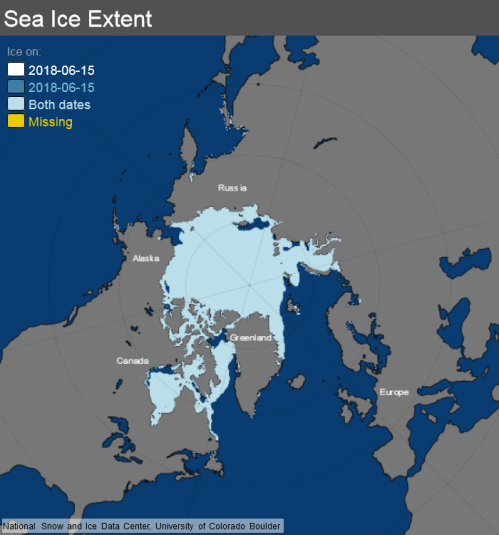
Did early summer heat waves cause sea ice to decline rapidly in 2007? If so, then the heat waves of the last few weeks cannot be as extraordinary as they are being made out to be.
OTHER YEARS BELOW, FOR COMPARISON:
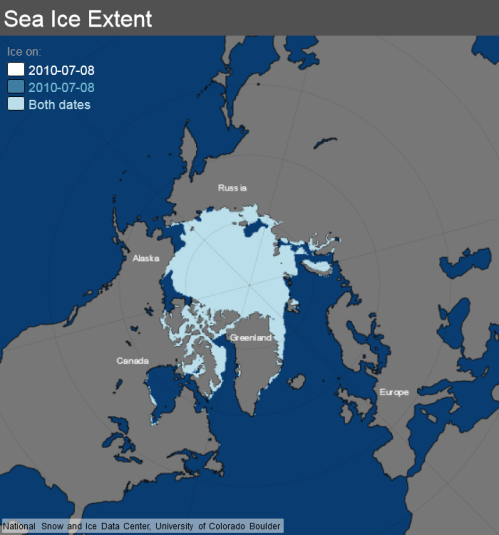
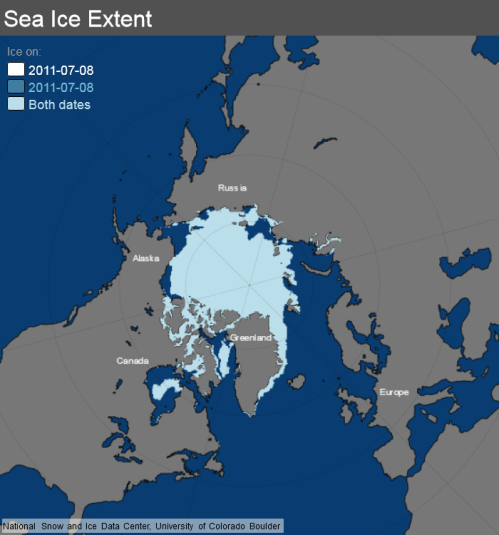
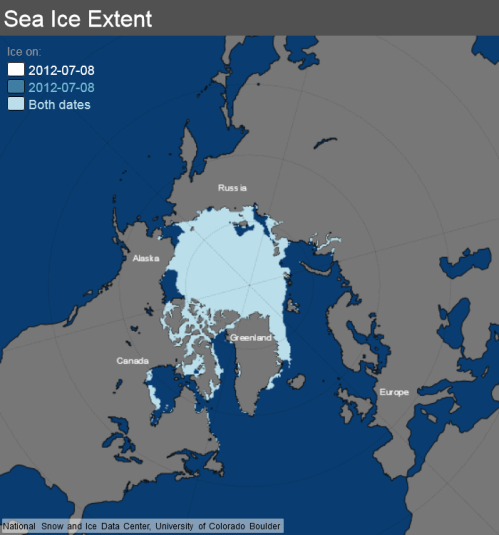
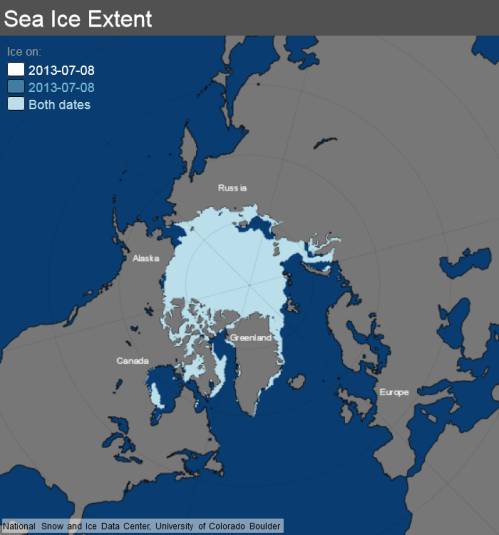
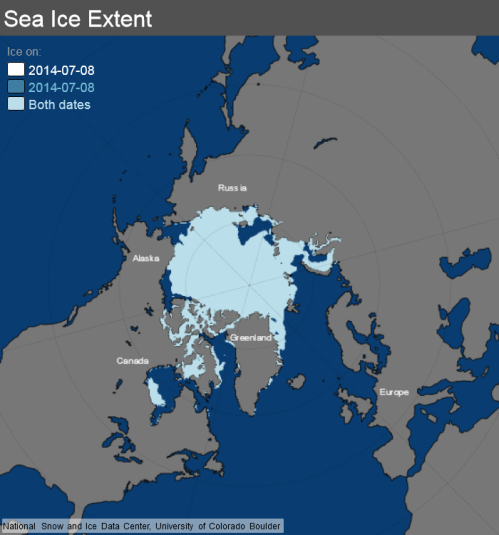
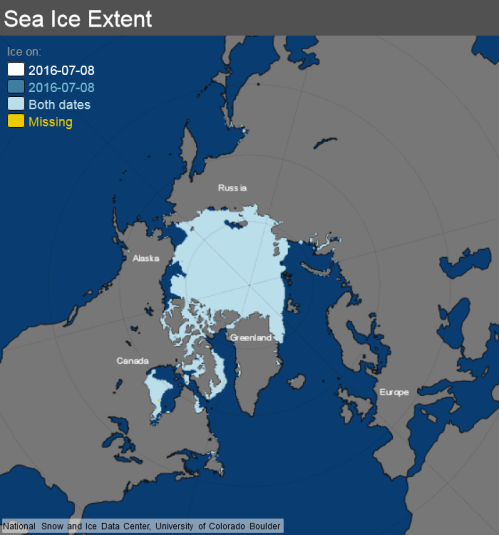
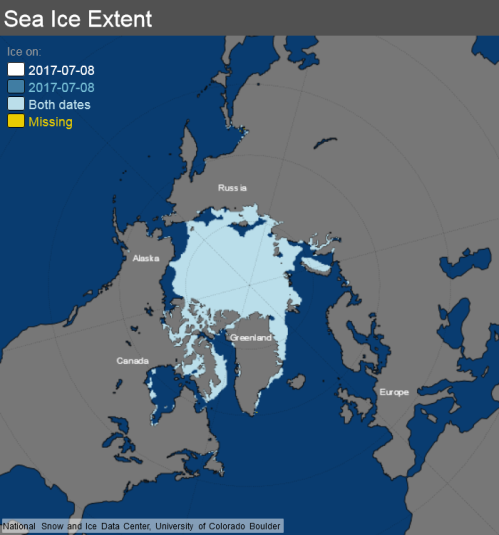
Find more years or more recent data at NSIDC’s new sea ice comparison tool (these maps were generated by setting both maps to the same date).
Conclusion: I don’t see any startling differences to ice extent in 2018 that could be blamed on the last couple of weeks of ‘global heat’ (aka “summer”) during late June and early July.
So far, it looks more or less like the same kind of Arctic ice retreat we’ve been seeing for the last 9 years, except slower.


